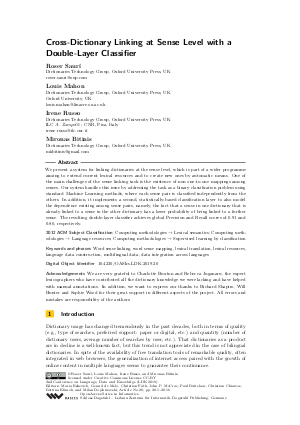OASIcs.LDK.2019.20.pdf
- Filesize: 0.58 MB
- 16 pages

 Creative Commons Attribution 3.0 Unported license
Creative Commons Attribution 3.0 Unported license

We present a system for linking dictionaries at the sense level, which is part of a wider programme aiming to extend current lexical resources and to create new ones by automatic means. One of the main challenges of the sense linking task is the existence of non one-to-one mappings among senses. Our system handles this issue by addressing the task as a binary classification problem using standard Machine Learning methods, where each sense pair is classified independently from the others. In addition, it implements a second, statistically-based classification layer to also model the dependence existing among sense pairs, namely, the fact that a sense in one dictionary that is already linked to a sense in the other dictionary has a lower probability of being linked to a further sense. The resulting double-layer classifier achieves global Precision and Recall scores of 0.91 and 0.80, respectively.

























Feedback for Dagstuhl Publishing